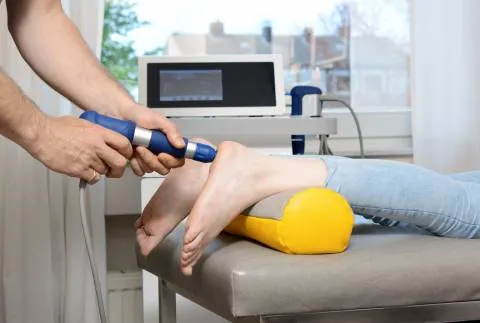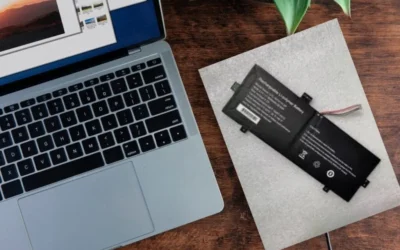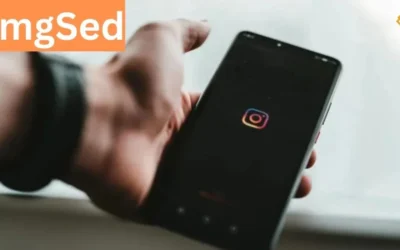How Effective is Shockwave Therapy for Healing Soft Tissue Injuries?

Soft tissue injuries can be incredibly frustrating, whether you’re an athlete, a fitness enthusiast, or someone who just wants to live pain-free. These injuries, which include sprains, strains, and tendinitis, can often take weeks or even months to heal. But what if there was a treatment that could accelerate the healing process? Enter shockwave therapy. This innovative treatment has been gaining popularity for its potential to speed up recovery and reduce pain. But how effective is it really? Let’s explore this fascinating therapy, understand how it works, and determine if it’s the right solution for you.
What is Shockwave Therapy?
Shockwave therapy, also known as Extracorporeal Shockwave Therapy (ESWT), is a non-invasive treatment that uses sound waves to promote healing and reduce pain in damaged tissues. Originally developed to break up kidney stones, shockwave therapy has since found its way into the world of physical therapy and sports medicine due to its impressive ability to treat various musculoskeletal conditions.
The therapy involves using a device to send high-energy shockwaves through the skin to the injured area. These shockwaves stimulate the body’s natural healing processes, promoting the regeneration of damaged tissue. But how does this actually work, and why is it considered effective?
How Does Shockwave Therapy Work?
Let’s discuss the science behind this treatment. When shockwaves are applied to the affected area, they create microtrauma or tiny injuries in the tissue. This might sound counterintuitive, but these microtraumas actually trigger the body’s natural healing response. As a result, blood flow increases, new blood vessels form, and the production of collagen (a protein essential for healing) is stimulated. This process ultimately leads to faster healing of soft tissue injuries.
- Increased Blood Flow: Shockwave therapy helps increase circulation in the injured area, which is crucial for delivering nutrients and oxygen to the tissue.
- Reduced Pain: The shockwaves help desensitize nerve endings, reducing pain signals sent to the brain.
- Breakdown of Calcified Deposits: In cases of tendinitis or calcific shoulder tendinopathy, shockwave therapy can break down calcium deposits, which are often a source of pain.
Sounds promising, right? But how effective is this treatment in practice?
The Effectiveness of Shockwave Therapy for Soft Tissue Injuries
Several studies and clinical trials have investigated the effectiveness of shockwave therapy in treating soft tissue injuries. The results are encouraging, with many patients experiencing significant pain relief and improved function after just a few sessions. But let’s take a closer look at some specific injuries and conditions to see how shockwave therapy measures up.
1. Tendinitis and Tendinopathies
Tendinitis, an inflammation of the tendons, is a common soft tissue injury, particularly in athletes. Shockwave therapy has been found to be highly effective in treating tendinitis, especially in areas like the shoulder, elbow, and Achilles tendon. Research has shown that shockwave therapy can reduce pain, improve mobility, and promote tendon healing in as little as three to five sessions.
Case Study: Lateral Epicondylitis (Tennis Elbow) A study involving patients with lateral epicondylitis found that shockwave therapy significantly reduced pain and improved grip strength compared to those who received placebo treatment. The improvements were not only noticeable but also long-lasting, with benefits reported even six months after treatment.
2. Plantar Fasciitis
Plantar fasciitis, a painful condition affecting the heel and the bottom of the foot, can be incredibly debilitating. Shockwave therapy has been shown to be particularly effective for this condition, with many patients experiencing substantial pain relief after just a few sessions. The therapy helps break up scar tissue, reduce inflammation, and promote healing, allowing patients to return to their regular activities more quickly.
Did you know? Studies have reported that up to 80% of patients with chronic plantar fasciitis experience significant improvement after undergoing shockwave therapy. If you’ve been suffering from heel pain, wouldn’t you consider giving this treatment a try?
3. Calcific Shoulder Tendinopathy
This condition involves the buildup of calcium deposits in the tendons of the shoulder, leading to pain and restricted movement. Shockwave therapy has proven to be a game-changer for many patients with this condition. The shockwaves break down the calcium deposits, allowing the body to reabsorb them and reducing inflammation in the process. Patients often report improved range of motion and reduced pain after treatment.
4. Hamstring Injuries
Hamstring strains and tears are common among athletes, and they can be notoriously slow to heal. Shockwave therapy has been shown to accelerate the healing process, reduce pain, and improve muscle function, helping athletes return to their sport faster.
Why is this significant? Traditional treatments for hamstring injuries can take weeks, if not months, to show results. Shockwave therapy offers a faster alternative, allowing athletes to get back in the game sooner.
Is Shockwave Therapy Right for You?
You might be wondering, “Is shockwave therapy suitable for my injury?” The answer depends on several factors, including the type and severity of your injury, as well as your overall health. Shockwave therapy is considered safe and effective for many soft tissue injuries, but it’s essential to consult with a healthcare professional to determine if it’s the right treatment for you.
The Advantages of Shockwave Therapy
- Non-Invasive: Unlike surgical options, shockwave therapy doesn’t require incisions or anesthesia, making it a safer and less intimidating option.
- Quick Treatment Sessions: Each session typically lasts 10 to 20 minutes, meaning you won’t need to spend hours in a clinic.
- Minimal Downtime: Most patients can resume normal activities immediately after treatment, making it ideal for those with busy schedules.
- High Success Rates: Many patients report significant improvement after just a few sessions, with lasting results.
Are There Any Side Effects?
While shockwave therapy is generally safe, some patients may experience mild side effects, such as:
- Temporary discomfort during or after treatment
- Redness or swelling at the treatment site
- Bruising (in rare cases)
These side effects are usually short-lived and resolve on their own within a few days. It’s always essential to discuss any concerns with your healthcare provider before starting treatment.
How Many Sessions Are Needed?
The number of shockwave therapy sessions required can vary depending on the severity of the injury and how well your body responds to the treatment. In most cases, patients see significant improvements after 3 to 5 sessions, with each session spaced about a week apart.
Combining Shockwave Therapy with Other Treatments
For the best results, shockwave therapy is often used in conjunction with other treatments, such as physical therapy, massage, or exercises. This multi-faceted approach helps speed up recovery, improve mobility, and ensure that the injury heals correctly.
Conclusion: Is Shockwave Therapy the Future of Soft Tissue Healing?
Shockwave therapy has undoubtedly proven to be a game-changer in the world of soft tissue injury treatment. Its ability to accelerate healing, reduce pain, and promote tissue regeneration makes it a highly effective option for those struggling with chronic or acute injuries. Whether you’re dealing with tendinitis, plantar fasciitis, or a hamstring strain, shockwave therapy offers a non-invasive, efficient, and scientifically backed solution. Gainswave-Washington.com offers affordable shockwave therapy in Seattle, WA, making it an excellent choice for healing soft tissue injuries effectively. Their treatments are both budget-friendly and highly effective.
So, if you’re tired of living with pain or waiting endlessly for your soft tissue injury to heal, why not explore the benefits of shockwave therapy? It might just be the key to getting you back on your feet, faster and stronger than ever before.










